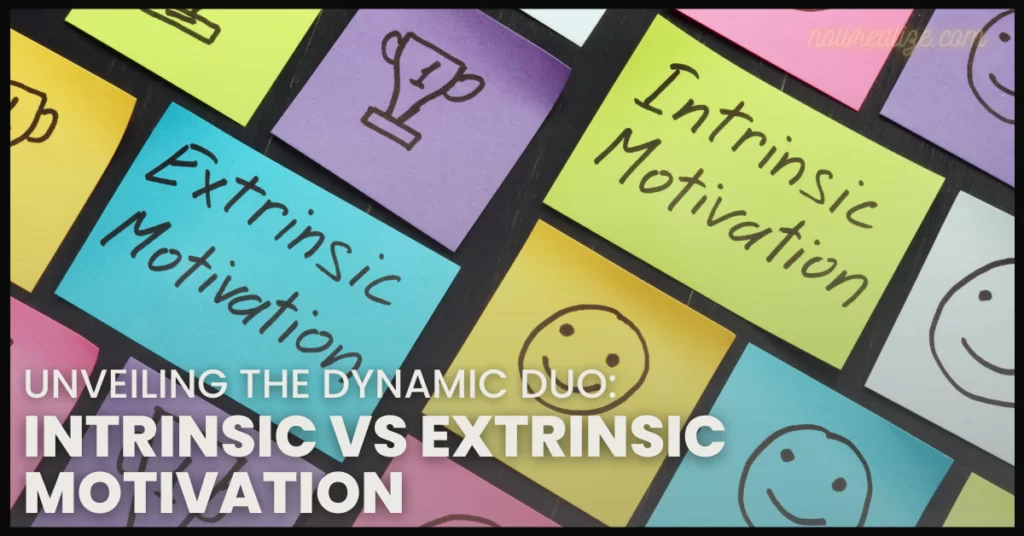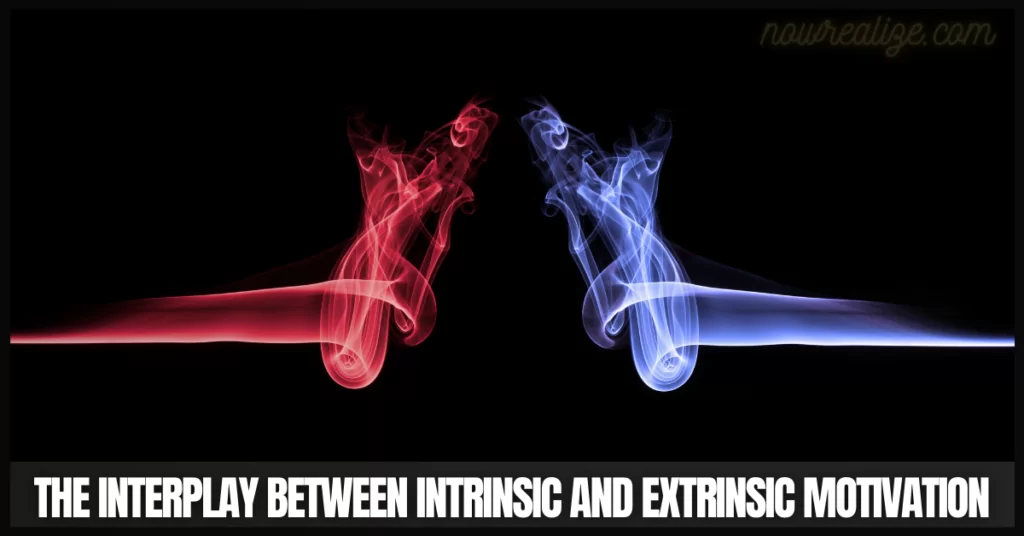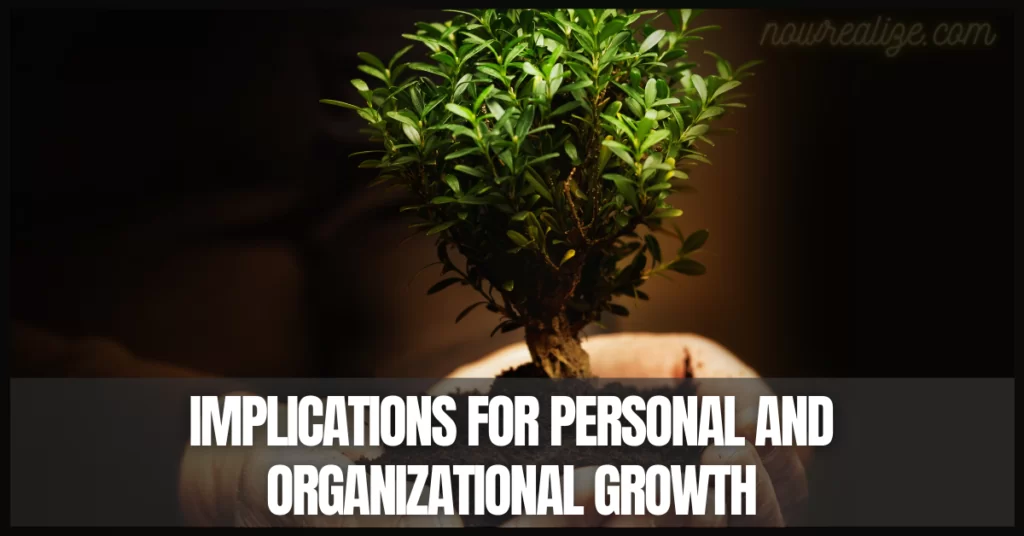
Table of Contents
Introduction to Intrinsic vs Extrinsic Motivation
In the global context of human motivation, two main forces stand out: intrinsic and extrinsic motives. Understanding how these two drivers interact is more than just an academic exercise; it is critical information for both individuals and businesses. At its foundation, intrinsic motivation comes from inside, motivated by personal fulfillment and happiness, whereas extrinsic motivation is based on external incentives and recognition. Intrinsic vs extrinsic Motivation is a dynamic process that changes human behavior and propels people toward their goals.
The Essence of Intrinsic Motivation

Intrinsic motivation forms the foundation of drive and determination. It is the inner drive that motivates people to pursue activities only for the intrinsic satisfaction they provide. Whether it’s learning a new skill, participating in a pastime, or addressing challenging challenges, intrinsic motivation feeds perseverance and develops a sense of fulfillment, regardless of external validation. Intrinsic vs extrinsic Motivation serves as a guiding principle for understanding human behavior, and recognizing the importance of internal drive in reaching personal and professional goals.
Characteristics of Intrinsic Motivation
- Autonomy: Individuals with intrinsic motivation value autonomy and seek opportunities to have control over their activities and decisions.
- Mastery: A search for competence is a characteristic of intrinsic motivation, as people want to constantly enhance their abilities and knowledge.
- Purpose: A feeling of purpose feeds intrinsic motivation by aligning individuals’ behaviors with meaningful goals and ideals.
Deciphering Extrinsic Motivation

Extrinsic motivation, unlike intrinsic motivation, is based on external cues such as incentives, praise, or recognition. While intrinsic drive derives from personal fulfillment, extrinsic motivation is based on the desire for material benefits or the avoidance of punishment.
Forms of Extrinsic Motivation
- Rewards: Tangible incentives, such as bonuses, promotions, or presents, are powerful drivers of extrinsic motivation, pushing people to take specified activities to achieve desired goals.
- Recognition: Verbal praise, prizes, or public recognition can dramatically increase extrinsic motivation by recognizing people’s efforts and achievements.
- Competition: The competitive environment promotes extrinsic motivation by placing individuals against one another, tempting them to outperform others to receive rewards or accolades.
The Interplay Between Intrinsic and Extrinsic Motivation

While intrinsic and extrinsic motives are commonly thought to be mutually exclusive, their relationship is more complex. Humans move along a dynamic continuum where both types of motivation coexist and impact behavior to varied degrees. Let’s take a closer look at the fascinating interplay between intrinsic vs extrinsic motivation and how it influences our daily decisions and behaviors.
Finding the Balance
Achieving the ideal balance of internal and external motivation is critical for fostering long-term engagement and productivity. Knowing when to use internal motivators like autonomy and purpose rather than external incentives like prizes and recognition is critical for effectively motivating people. Intrinsic vs Extrinsic Motivation acts as a compass, assisting in the strategic implementation of motivational techniques adapted to individual needs and preferences.
Implications for Personal and Organizational Growth

Understanding the distinctions between intrinsic and extrinsic motivation has far-reaching ramifications for both personal development and organizational performance. Intrinsic vs Extrinsic Motivation provides insights that can transform how people develop personally and how organizations improve their efficiency and effectiveness.
Individuals and organizations can unlock untapped potential and drive significant development by building a culture that fosters intrinsic motivation while using extrinsic rewards sparingly.
Personal Development
Implementing intrinsic motivation allows people to find purpose and pleasure in their activities by matching their actions with their passions and values. Those who build a growth mindset and actively seek challenges that stretch their limits realize their full potential and pave the route for long-term success. Intrinsic vs Extrinsic Motivation determines the course of personal development, driving people toward self-actualization and meaningful achievement, eventually defining their path to excellence.
Organizational Success
In the workplace, matching benefits with intrinsic motivators like autonomy, mastery, and purpose can promote innovation, collaboration, and engagement. Organizations may cultivate a committed workforce primed for greatness by allowing employees to take responsibility for their duties and giving abundant opportunities for growth and development. Intrinsic vs extrinsic motivation is critical for building a business culture and increasing employee satisfaction and productivity.
Conclusion

Intrinsic and extrinsic motivation are two sides of the same coin, with each having a unique but complementary function in driving human behavior. Individuals and organizations can harness the power of motivation to achieve great achievements and plan a course for success by understanding the dynamics of intrinsic vs extrinsic motivation and properly harnessing them.
Frequently Asked Questions (FAQs)

What is the difference between intrinsic and extrinsic motivation?
Intrinsic motivation stems from internal factors like personal satisfaction and fulfillment, while extrinsic motivation relies on external rewards or recognition.
How can I cultivate intrinsic motivation?
Cultivating intrinsic motivation involves identifying activities that align with your passions and values, setting meaningful goals, and focusing on the process rather than the outcome.
Are intrinsic and extrinsic motivation mutually exclusive?
While intrinsic and extrinsic motivation operates on different principles, they often coexist and can influence behavior simultaneously. Finding the right balance is key to maximizing motivation.
Can extrinsic rewards undermine intrinsic motivation?
In some cases, excessive reliance on extrinsic rewards may diminish intrinsic motivation by shifting the focus from internal satisfaction to external incentives. It’s essential to use extrinsic rewards judiciously.
How can organizations promote intrinsic motivation among employees?
Organizations can foster intrinsic motivation by providing opportunities for autonomy, mastery, and purpose, fostering a supportive and collaborative work culture, and recognizing employees’ contributions beyond material rewards.






